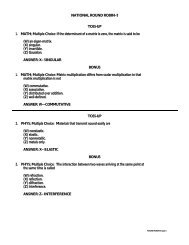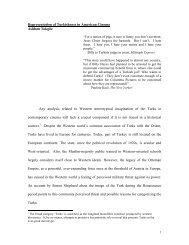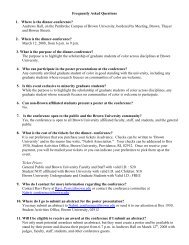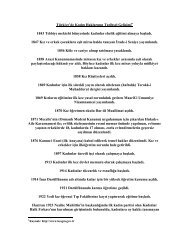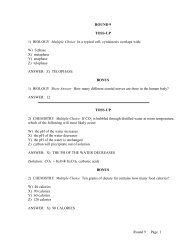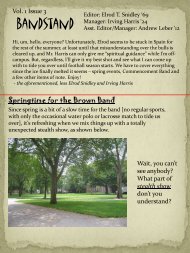Download as a .pdf file - Brown University
Download as a .pdf file - Brown University
Download as a .pdf file - Brown University
Create successful ePaper yourself
Turn your PDF publications into a flip-book with our unique Google optimized e-Paper software.
Contemplative Judaism<br />
a state where one’s mind is emptied of all thoughts, perceptions, and<br />
sensations, whether physical or spiritual, and in which all one feels and<br />
perceives, is nothingness.” 22 Attachment to the self prevents one from<br />
attaining an experience of nothingness, for ayin is pre-conscious (kadmut<br />
ha-sekhel). 23 The Maggid teaches that human will is also incompatible with<br />
ayin, which “does not desire anything.” 24 One must leave the ego and<br />
instead follow the lead of the soul, “for the soul is something that no one<br />
comprehends.” 25<br />
There are other, less abstract practices that supposedly help one<br />
experience ayin. With the conceptual method, one intellectually<br />
contemplates nothingness. 26 One may use any question or mental<br />
exercise that leads one to conceptualize nothingness. For instance, one<br />
may contemplate the “I” that h<strong>as</strong> a body, mind, and soul. One may try to<br />
imagine an existence that transcends physical and temporal dimensions.<br />
One may also meditate on paradoxes that pertain to YHVH and try to<br />
conceptualize such an entity. For instance, God is every thing, and no<br />
thing is God; and God is within every thing, and everything is within<br />
God. Such paradoxes lead one to have momentary glimpses of ayin and ein<br />
sof.<br />
Other contemplative practices that help one experience ayin involve<br />
visualizations of nothingness. Since ayin is said to be the level at which<br />
YHVH and humans are connected, “when a person visualizes nothingness,<br />
he is, to some degree, in touch with the Divine within himself.” 27 There<br />
is a common error in visualizing nothingness. Pinson writes, “In our<br />
attempt to visualize nothingness, we may visualize a black empty space,<br />
a complete vacuum of nothingness. However, black is itself a color and<br />
thus a definition. The color black and space are both a something by their<br />
very definition; thus, blackness, or empty space, cannot be the accurate<br />
description of nothingness.” 28 Kaplan encourages the simple technique<br />
of trying to visualize what is behind or inside of one’s head. 29 A more<br />
advanced and abstract method is to meditate on the letters that form<br />
one of God’s unpronounceable names: Yod-Heh-Vav-Heh (YHVH). One<br />
may literally place the letters in front of oneself. Then, one meditates on<br />
the image of Y-H-V-H until the letters dominate one’s consciousness, in<br />
a process called chakikah (literally, “engraving”). Once one h<strong>as</strong> engraved<br />
Y-H-V-H in one’s awareness, one engages in the process of chatzivah<br />
29



